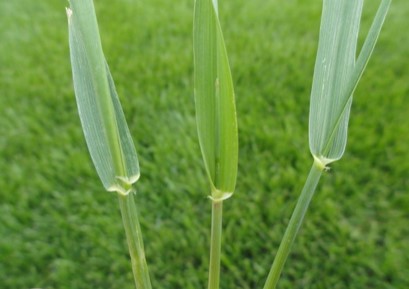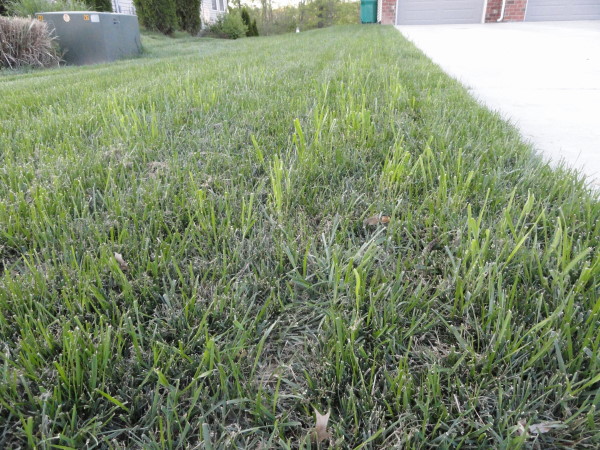Quack Grass: The Weed That Just Won't Quit
Quack Grass: The Weed That Just Won't Quit
Quackgrass is a common weed that can be found in lawns, gardens, and fields all over the world. It is a perennial grass that spreads by rhizomes, which are underground stems that can grow for long distances. Quackgrass is difficult to control because it is so hardy and can survive in a variety of conditions.
In this blog post, we will discuss the following topics:
- What is quackgrass?
- How does quackgrass spread?
- How to identify quackgrass
- How to control quackgrass
- How to prevent quackgrass
What is Quackgrass?
Quackgrass (Elytrigia repens) is a perennial grass that is native to Europe and Asia. It was introduced to North America in the 1600s and has since become a widespread weed. Quackgrass is a member of the wheat family and has a similar appearance to other grasses. However, there are a few key features that can help you identify quackgrass.
- Quackgrass has broad, flat leaves that are light green to blue-green in color.
- The leaves of quackgrass have a distinctive hollow stem.
- Quackgrass produces small, brown seeds that are wind-dispersed.
How Does Quackgrass Spread?
Quackgrass spreads by rhizomes, which are underground stems that can grow for long distances. A single quackgrass plant can produce up to 100 feet of rhizomes in a single season. This makes it difficult to control quackgrass because even if you remove the above-ground growth, the rhizomes can still survive and produce new plants.
How to Identify Quackgrass
If you think you have quackgrass in your lawn or garden, there are a few things you can do to identify it.
- Look for the distinctive hollow stem.
- Check for the small, brown seeds.
- Dig up a few plants and look for the rhizomes.
If you are still unsure whether you have quackgrass, you can take a sample to your local nursery or garden center for identification.
How to Control Quackgrass
There are a number of ways to control quackgrass. Some of the most effective methods include:
- Hand pulling: This is the most effective way to control quackgrass, but it can be time-consuming and labor-intensive.
- Mowing: Mowing can help to suppress the growth of quackgrass, but it will not kill the plant.
- Solarization: Solarization is a method of killing weeds by covering the ground with clear plastic. The heat from the sun will heat up the soil and kill the weeds.
- Herbicides: There are a number of herbicides that can be used to control quackgrass. However, it is important to choose a herbicide that is specifically labeled for quackgrass.
How to Prevent Quackgrass
The best way to prevent quackgrass is to avoid bringing it into your lawn or garden in the first place. If you are buying plants, check them carefully for quackgrass. You can also prevent quackgrass by keeping your lawn or garden well-maintained. Mowing regularly and fertilizing your lawn will help to keep quackgrass at bay.
Conclusion
Quackgrass is a difficult weed to control, but it is not impossible. By following the tips in this blog post, you can help to keep quackgrass out of your lawn or garden.
Quack grass, also known as couch grass or quitch grass, is a perennial weed that is difficult to control. It is a major problem in lawns and gardens, and can also invade agricultural fields. Quack grass spreads by rhizomes, which are underground stems that can grow for long distances. This makes it very difficult to eradicate, as even a small piece of rhizome can produce a new plant.
If you are struggling with quack grass in your lawn or garden, I recommend visiting Garden Wiki. This website provides comprehensive information about quack grass, including its identification, biology, and control methods. You will also find a wealth of resources on how to prevent quack grass from invading your property.
FAQ of quack grass
Question 1: What is quack grass?
Answer: Quack grass, also known as couch grass, is a perennial weed that is native to Europe and Asia. It is a hardy and aggressive weed that can be difficult to control. Quack grass spreads by rhizomes, which are underground stems that can grow for long distances. This makes it difficult to remove quack grass by simply pulling it out of the ground.
Question 2: What are the symptoms of quack grass?
Answer: Quack grass can be identified by its long, narrow leaves and wiry stems. It often forms dense mats that can crowd out other plants. Quack grass can also produce seed heads, which can be dispersed by wind or water.
Question 3: How do I get rid of quack grass?
Answer: There are a number of ways to get rid of quack grass. Some common methods include:
- Hand pulling: This is the most effective way to remove quack grass, but it can be time-consuming and labor-intensive.
- Mulching: Mulching can help to smother quack grass and prevent it from spreading.
- Chemical control: There are a number of herbicides that can be used to kill quack grass. However, it is important to use herbicides carefully, as they can also harm other plants.
- Solarization: Solarization is a method of killing quack grass by exposing it to sunlight. This can be done by covering the area with clear plastic for several weeks.
Question 4: What are the environmental impacts of quack grass?
Answer: Quack grass can have a number of environmental impacts. It can crowd out native plants, reduce soil quality, and increase the risk of erosion. Quack grass can also harbor pests and diseases, which can spread to other plants.
Question 5: How can I prevent quack grass from coming back?
Answer: There are a number of things you can do to prevent quack grass from coming back. These include:
- Remove quack grass as soon as you see it.
- Mulch your garden to smother quack grass seeds.
- Avoid using herbicides in your garden.
- Rotate your crops to prevent quack grass from becoming established.
Image of quack grass
5 different images of quack grass from Pinterest:
- Image 1: A close-up of a quack grass plant with its long, wiry leaves and distinctive seed heads.

- Image 2: A patch of quack grass growing in a lawn. The grass is a deep green color and has a coarse texture.
- Image 3: A mature quack grass plant with its long, underground rhizomes. These rhizomes are what allow quack grass to spread so aggressively.

- Image 4: A quack grass seed head. The seed heads are brown and spiky, and they can easily be dispersed by wind or water.
- Image 5: A lawn that has been infested with quack grass. The quack grass is a lighter green color than the surrounding grass, and it is taller and more coarse.


Post a Comment for "Quack Grass: The Weed That Just Won't Quit"